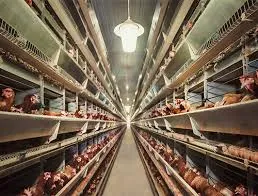poultry cages for layers
Oct . 17, 2024 15:37 Back to list
poultry cages for layers
The Importance of Poultry Cages for Layer Hens A Comprehensive Overview
In the world of poultry farming, the housing and care of laying hens are paramount to the success and sustainability of egg production. Among the various methods of housing hens, poultry cages designed specifically for layers have emerged as a popular choice. This article delves into the significance of poultry cages for layers, examining their design, benefits, and impact on the poultry industry.
The Design of Poultry Cages for Layers
Poultry cages for layer hens are meticulously designed to meet the specific needs of hens during the laying period. Typically constructed from galvanized steel or high-quality plastic, these cages provide a secure and hygienic environment for the birds. The cages are usually tiered, allowing for vertical stacking and efficient use of space, which is crucial for maximizing production on poultry farms.
Each cage is equipped with features that cater to the well-being of the hens. For instance, they often include perches where birds can rest, nesting boxes for laying eggs, and proper ventilation to ensure fresh air circulation. Additionally, these cages are designed to facilitate easy cleaning and maintenance, which is vital in preventing disease and ensuring the health of the flock.
Advantages of Using Poultry Cages
One primary advantage of using poultry cages for layers is the significant improvement in egg production efficiency. When hens are housed in cages, they tend to have better access to food and water, ensuring they receive the nutrients necessary for optimal egg production. As a result, farmers report higher egg yields and a more consistent supply of quality eggs.
Moreover, poultry cages help in minimizing the risk of disease transmission among hens. In a traditional free-range system, birds are more susceptible to parasites and diseases, which can spread quickly within a flock. Caged systems reduce this risk as they limit interaction between individual birds, thus maintaining overall flock health and reducing veterinary costs.
poultry cages for layers

Another benefit is the effectiveness in managing waste. Poultry cages often feature sloped floors that guide droppings away from the hens, keeping their living environment clean and reducing foul odors. This waste management system not only supports hen health but also simplifies the collection of manure, which can then be utilized as a valuable fertilizer for crops.
Addressing Animal Welfare Concerns
While poultry cages offer numerous benefits, they have not been exempt from criticism. Animal welfare advocates often raise concerns about the confinement of hens in cages. In response to these concerns, many manufacturers have developed enriched cage systems. These enriched cages provide additional space, perches, and nesting areas, allowing hens to exhibit more natural behaviors while still benefiting from the efficiencies of a caged environment.
The welfare of hens is a cornerstone of sustainable poultry farming. Therefore, it is crucial for producers to strike a balance between efficient production and the ethical treatment of animals. By adopting improved cage systems, farmers can address welfare concerns while continuing to produce eggs in a manner that is economically viable.
The Economic Impact on the Poultry Industry
The integration of poultry cages has significantly influenced the economic landscape of egg production. Higher yields, reduced disease rates, and improved feed conversion ratios contribute to the overall profitability of poultry operations. As the global demand for eggs continues to rise, efficient egg production systems enabled by poultry cages will be vital for meeting this demand while ensuring the sustainability of the industry.
In conclusion, poultry cages for layers play a critical role in modern egg production. Their design facilitates optimal health and efficiency, while also addressing welfare through the implementation of enriched systems. As the poultry industry evolves, the continued innovation in cage design will ensure that both producers and consumers benefit from high-quality, sustainable egg production. By fostering an environment that prioritizes the welfare of layer hens alongside economic viability, the poultry industry can adapt to the demands of a growing population, all while maintaining ethical standards.
-
Hot Sale 24 & 18 Door Rabbit Cages - Premium Breeding Solutions
NewsJul.25,2025
-
Automatic Feeding Line System Pan Feeder Nipple Drinker - Anping County Yize Metal Products Co., Ltd.
NewsJul.21,2025
-
Automatic Feeding Line System Pan Feeder Nipple Drinker - Anping County Yize Metal Products Co., Ltd.
NewsJul.21,2025
-
Automatic Feeding Line System - Anping Yize | Precision & Nipple
NewsJul.21,2025
-
Automatic Feeding Line System - Anping Yize | Precision & Nipple
NewsJul.21,2025
-
Automatic Feeding Line System-Anping County Yize Metal Products Co., Ltd.|Efficient Feed Distribution&Customized Animal Farming Solutions
NewsJul.21,2025






